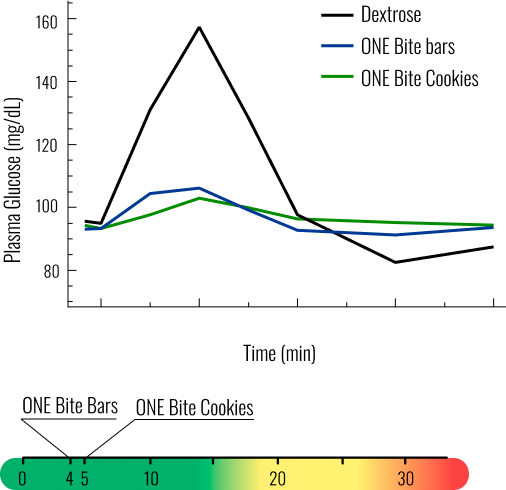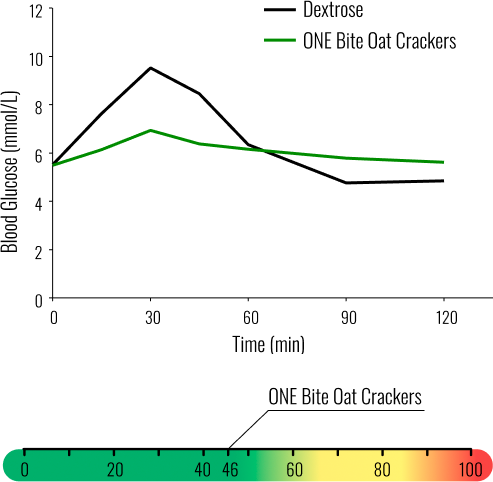ONE Bite Clinical Studies

In September 2023, ONE Bite underwent human research studies to ascertain and validate the low glycemic load (GL) and index (GI) of our snacks
The research was conducted in accordance with ISO standards by INQUIS Clinical Research, a world-leading laboratory renowned for developing the method of determining GI and GL.


Participants
- males and non-pregnant females
- age range of 18 to 75 years
- diverse ethnicities (North Americans, Asians, etc.)

The average participant profile resembled that of a North American individual, 38 years old, with a height of 167 cm and a weight of 75 kg.
Method

treatments, conducted
on separate days

samples after a 10-14
hour overnight fast

ONE Bite snacks or
22g of Dextrose*

45, 60, 90, and 120
minutes after eating

samples using a glucose
and plasma analyzers
Results
The glucose concentrations and subsequent increases in blood glucose levels following the consumption of ONE Bite protein bars, cookies and crackers were significantly lower than those observed after the consumption of Dextrose at 15, 30, and 45 minutes. At 90 and 120 minutes after consuming ONE Bite, the glucose levels did not exhibit a rapid decline seen with Dextrose; instead, they maintained a steady, normal level without significant fluctuations.


Impact of low glycemic diet**
- Reduced risk for cardiovascular disease (1) and diabetes (2)
- Greater weight loss over periods of 3-6 months (3)(4)
- Favorable effect on serum triglyceride and HDL-cholesterol concentrations (5)

The INQUIS glycemic response testing protocol has been approved by the Western Institutional Review Board® which meets all the requirements of FDA and DHHS
